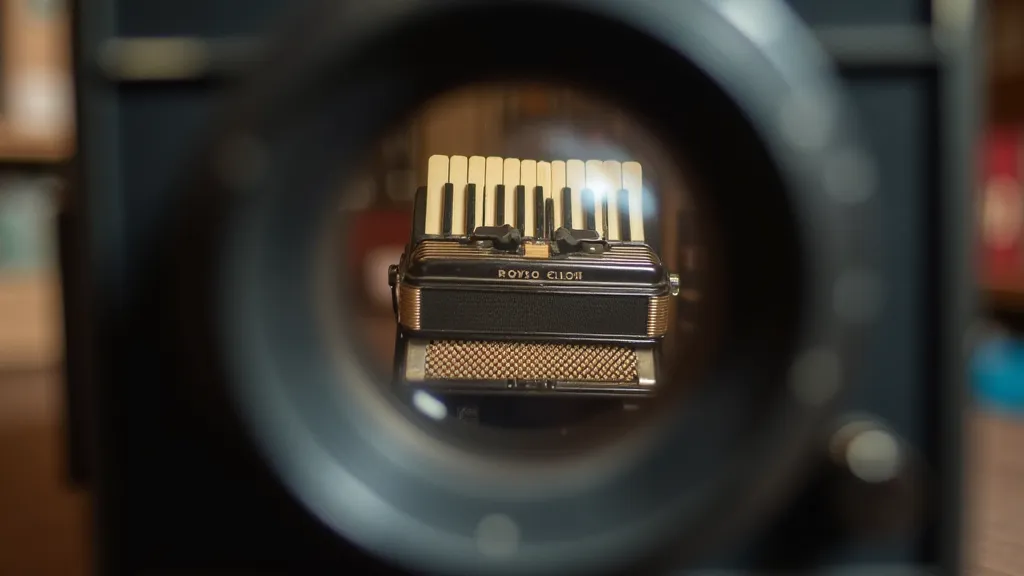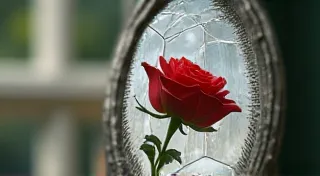The Lens as Metaphor: Seeing the World Through a Writer's Eye
There’s a peculiar intimacy in holding a vintage viewfinder. It's more than just a component of a camera; it’s a portal. A small, often intricately crafted window into a moment frozen in time, a glimpse through the eyes of someone long gone. Restoring these viewfinders, as I’m often doing for my website dedicated to antique cameras, isn’t merely a technical exercise. It's an act of quiet reverence, a conversation with the past. And it’s struck me repeatedly that the way a viewfinder functions – its ability to capture, interpret, and frame – mirrors the essential qualities of a writer’s craft.
Consider the history. These aren's just pieces of plastic and glass; they’re often testaments to remarkable ingenuity. Early cameras, and their viewfinders, weren’t born of mass production. Each element spoke of a craftsman’s care, of the meticulous attention required to bend metal, cut glass, and assemble complex mechanisms. Many were hand-assembled, and you can feel that in the slight imperfections, the unique textures, the way the light catches the edges.
I recall finding a particularly beautiful viewfinder from a Kodak Brownie box camera at a flea market years ago. Its condition was… challenging. The leatherette was peeling, the glass was clouded with years of grime, and the internal focusing mechanism was stubbornly jammed. As I carefully disassembled it, cleaning each component, I felt a profound connection to the person who had originally assembled it. I imagined their hands, their tools, the specific studio or workshop where it was made. It wasn't just a viewfinder; it was a piece of someone's life, a fragment of a forgotten world.

The Physics of Perception
A camera lens, at its core, is about light. It’s about bending and channeling that light to create an image. But it’s also about interpreting it. The lens doesn’t just capture what's *there*; it shapes it. It dictates the depth of field, the contrast, the overall feeling of the scene. A wide-angle lens distorts perspective, creating a sense of drama or disorientation. A telephoto lens compresses space, bringing distant objects closer. A macro lens reveals hidden details, transforming the mundane into the extraordinary.
Similarly, a writer’s job is to take the raw material of experience – the events, the emotions, the observations – and transform them into something meaningful. We gather information, just like a lens gathers light, but it’s our choices – the words we select, the sentences we construct, the perspective we adopt – that shape the final product. We choose to emphasize certain details, to downplay others. We choose to reveal our own biases and assumptions. Just as the lens dictates the image, our language dictates the reader’s understanding.
Think about the power of a single adjective. "The dog ran" is a simple statement. But "The *leaping* dog ran" suddenly evokes a sense of energy and excitement. "The *slouching* dog ran" paints a completely different picture of weariness and defeat. It’s a small change, but it can have a profound impact on the reader’s perception.
Craftsmanship and Commitment
The craftsmanship evident in vintage viewfinders is humbling. The tolerances were often incredibly tight, especially considering the lack of modern manufacturing technology. The leatherwork, the engravings, the precise alignment of the lenses – all spoke of a dedication to quality that seems increasingly rare today. These weren’t disposable items; they were meant to last, to be cherished, to be passed down through generations.
That same commitment to craftsmanship is what separates a competent writer from a truly gifted one. It’s not enough to simply string words together. It requires patience, discipline, and a willingness to revise and refine until the writing is as clear, concise, and evocative as possible. It requires a deep understanding of language, a keen eye for detail, and a relentless pursuit of excellence.
I’m reminded of a small viewfinder I restored recently – a tiny, almost impossibly delicate piece from a folding stereo camera. The prism was cracked, the focusing mechanism was frozen, and the leather covering was brittle with age. It took days of painstaking work to bring it back to life. But the feeling of satisfaction I felt when I finally held it in my hand, fully functional and gleaming with renewed clarity, was immeasurable. It was a testament to the power of perseverance, the beauty of restoration, and the enduring value of handcrafted quality.

Beyond the Frame
Perhaps the most profound lesson that a vintage viewfinder offers is the reminder of perspective. The frame itself dictates what the viewer sees, but it also shapes their understanding of the world. A close-up isolates a single element, while a wide shot reveals the larger context. A tilted frame creates a sense of unease, while a symmetrical frame suggests harmony and balance.
As writers, we too must be mindful of our perspective. We must be aware of the biases that shape our understanding of the world, and we must strive to present a balanced and nuanced portrayal of the truth. We must be willing to challenge our own assumptions and to consider alternative viewpoints. The best writing transcends the limitations of the frame, inviting the reader to see the world in a new light.
The act of restoring a vintage viewfinder is a meditative practice. It forces you to slow down, to pay attention to detail, to appreciate the ingenuity and artistry of the past. And it reminds you that every image, every story, is ultimately a matter of perspective – a choice of how to see and how to share the world.

So, the next time you pick up a vintage viewfinder, or sit down to write, remember the lens as a metaphor – a reminder that both require careful observation, skilled craftsmanship, and a profound appreciation for the power of perspective. They are both, at their best, acts of seeing and sharing – of bringing a little more clarity and beauty into the world.





